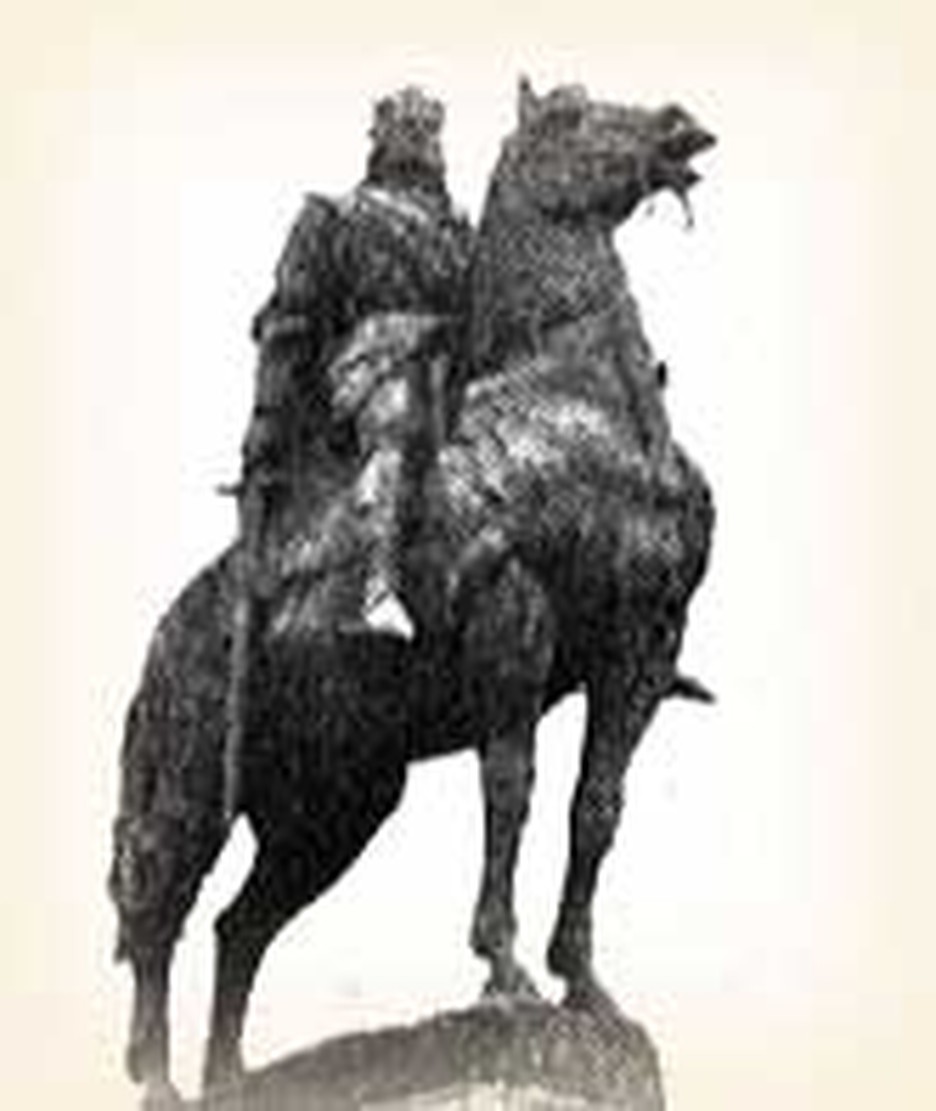
A stream of refugees hurried along roads and flowed across fields away from the little town of Tannenberg in Poland. The old men, the women and children toted a few blankets and pots. Armies were massing behind them. There would be gory work soon. Anxiously the refugees snatched at every rumor. One way or the other, this day, July 15, 1410 would determine the fate of millions in eastern Europe.
A year earlier, Poland's King Jagiello (also known as Jahajla) had met with his brother, the Grand Duke of Lithuania. During the nine days of talks, which took place at a church in the city that is now known as Brest, they planned a master strategy against the dreaded Teutonic Knights. The showdown was about to begin.
The Teutonic Knights were founded as a hospital order in the Holy Land with the name "Order of the Hospital of St. Mary the Virgin." Changes in the Mid East led them to become a military religious order based in Germany. Various popes granted them extensive rights and "Christian" secular authorities employed the knight's military muscle against pagans in eastern Europe. The knights became powerful, cruel and arrogant. Several times a year they attacked Poland and surrounding nations.
How long could this go on? King Jagiello hoped not long. He had converted to Christianity himself as a condition for accepting the throne of Poland. Now the knights had no religious excuse to attack Poland. They had political reasons, however. They were looking to expand their territory and Jagiello had gone back on his promise to hand over certain lands to them.
Jagiello and his allies massed 39,000 troops near Tannenberg. The Teutonic Knights appeared with an army of 27,000. Of course, only a few of the 27,000 belonged to the religious order itself. But the odds were not against the Teutonic Knights, for they had a formidable corps of well-trained soldiers and cavalry holding their army together. The number of forces arrayed on either side made this one of the largest battles of the Middle Ages.
The armies smashed against each other. All day long the battle raged. It was not clear who would win.
But at the end of the day, the refugees learned that the Teutonic Knights were in retreat. They left 8,000 dead on the field (including their grand master) and surrendered as many as 14,000 prisoners. It was the beginning of the collapse of the order. Poland would no more be seriously threatened by these thugs in religious clothes.
Fifty years later, the knights lost Marienburg, their center of operations. The Protestant Reformation further eroded their power. They went back to nursing. In 1929, the pope reorganized them as a purely religious order. Few are left today.
Bibliography:
- Dlugosz, Jan. "The Battle of Tannenberg or Grunwald in 1410." http://www.deremilitari.org/dlugosz.htm
- Haywood, Matthew. "Battle of Tannenberg 1410 AD
Between the Teutonic Knights and the Polish/Lithuanian army." http://myweb.tiscali.co.uk/matthaywood/ main/Battle_of_Tannenberg.htm. - Moeller, Ch. "Teutonic Order." The Catholic Encyclopedia. New York: Robert Appleton, 1914.
- Slocombe, G. E. Poland. The Nations' Histories. London: T. C. & E. C. Jack, Ltd., 1916, source of the portrait.
- "Teutonic Order." The Oxford Dictionary of the Christian Church. Edited by F. L. Cross and E. A. Livingstone. Oxford, 1997.
- Various encylopedia and internet articles, and paragraphs in secular and church histories (e.g.: Will Durant, The Reformation, p.173).
Last updated June, 2007.


